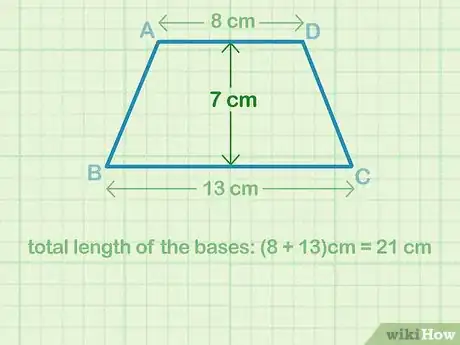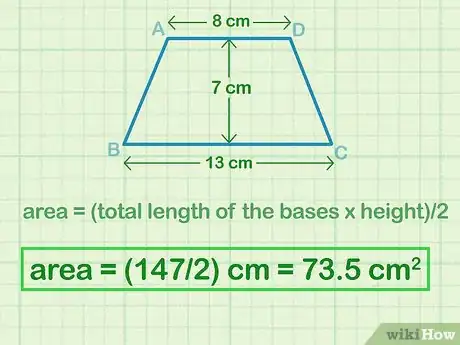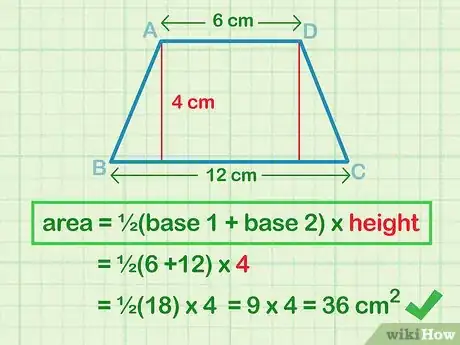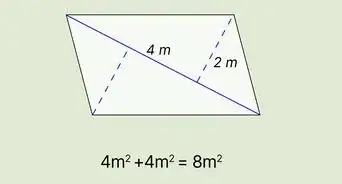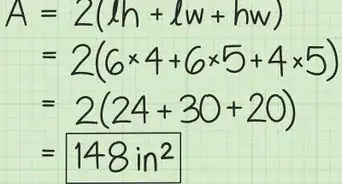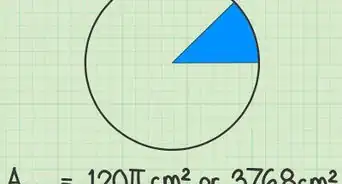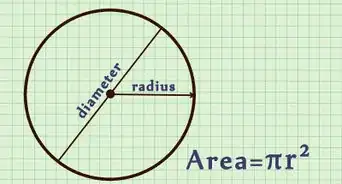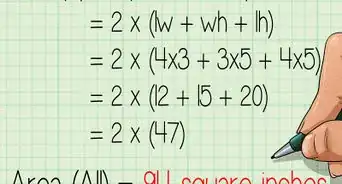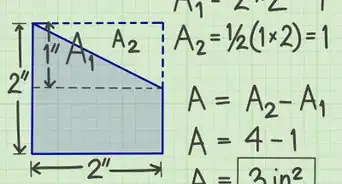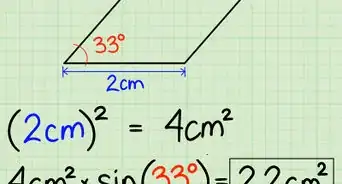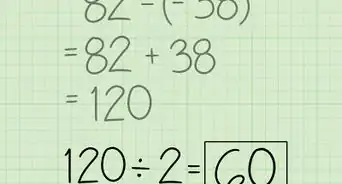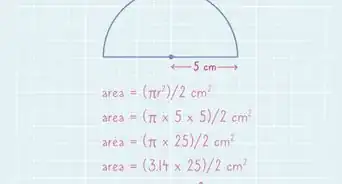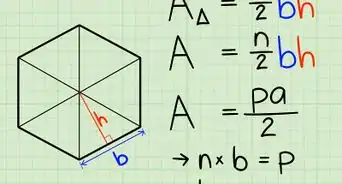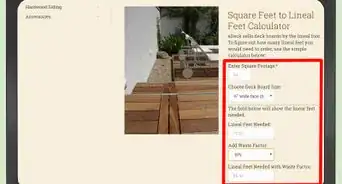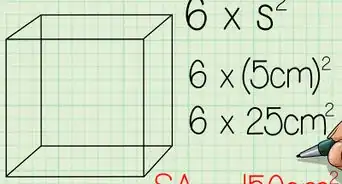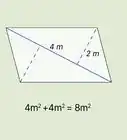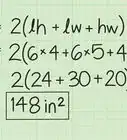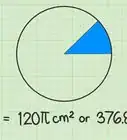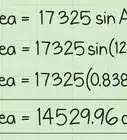This article was co-authored by wikiHow staff writer, Hunter Rising. Hunter Rising is a wikiHow Staff Writer based in Los Angeles. He has more than three years of experience writing for and working with wikiHow. Hunter holds a BFA in Entertainment Design from the University of Wisconsin - Stout and a Minor in English Writing.
There are 9 references cited in this article, which can be found at the bottom of the page.
wikiHow marks an article as reader-approved once it receives enough positive feedback. This article has 13 testimonials from our readers, earning it our reader-approved status.
This article has been viewed 708,334 times.
Learn more...
A trapezoid, also known as a trapezium, is a 4-sided shape with two parallel bases that are different lengths. The formula for the area of a trapezoid is A = ½(b1+b2)h, where b1 and b2 are the lengths of the bases and h is the height.[1] If you only know the side lengths of a regular trapezoid, you can break the trapezoid into simple shapes to find the height and finish your calculation. When you're finished, just label your units!
Steps
Finding the Area Using Height and Base Lengths
-
1Add together the lengths of the bases. The bases are the 2 sides of the trapezoid that are parallel with one another. If you aren’t given the values for the base lengths, then use a ruler to measure each one. Add the 2 lengths together so you have 1 value.[2]
- For example, if you find that the top base (b1) is 8 cm and the bottom base (b2) is 13 cm, the total length of the bases is 21 (8 cm + 13 cm = 21 cm, which reflects the "b = b1 + b2" part of the equation).
-
2Measure the height of the trapezoid. The height of the trapezoid is the distance between the parallel bases. Draw a line between the bases, and use a ruler or other measuring device to find the distance. Write the height down so you don’t forget it later in your calculation.[3]
- The length of the angled sides, or the legs of the trapezoid, is not the same as the height. The leg length is only the same as the height if the leg is perpendicular to the bases.
Advertisement -
3Multiply the total base length and height together. Take the sum of the base lengths you found (b) and the height (h) and multiply them together. Write the product in the appropriate square units for your problem.[4]
- In this example, 21 cm x 7 cm = 147 cm2 which reflects the "(b)h" part of the equation.
-
4Multiply the product by ½ to find the area of the trapezoid. You can either multiply the product by ½ or divide the product by 2 to get the final area of the trapezoid since the result will be the same. Make sure you label your final answer in square units.[5]
- For this example, 147 cm2 / 2 = 73.5 cm2, which is the area (A).
Calculating Area of a Trapezoid If You Know the Sides
-
1Break the trapezoid into 1 rectangle and 2 right triangles. Draw straight lines down from the corners of the top base so they intersect and form 90-degree angles with the bottom base. The inside of the trapezoid will have 1 rectangle in the middle and 2 triangles on either side that are the same size and have 90-degree angles. Drawing the shapes helps you visualize the area better and helps you find the height of the trapezoid.[6]
- This method only works for regular trapezoids.
-
2Find the length of one of the triangle’s bases. Subtract the length of the top base from the length of the bottom base to find the amount that’s left over. Divide the amount by 2 to find the length of the triangle’s base. You should now have the length of the base and the hypotenuse of the triangle.[7]
- For example, if the top base (b1) is 6 cm and the bottom base (b2) is 12 cm, then the base of the triangle is 3 cm (because b = (b2 - b1)/2 and (12 cm - 6 cm)/2 = 6 cm which can be simplified to 6 cm/2 = 3 cm).
-
3Use the Pythagorean theorem to find the height of the trapezoid. Plug the values for the length of the base and the hypotenuse, or the longest side of the triangle, into A2 + B2 = C2, where A is the base and C is the hypotenuse. Solve the equation for B to find the height of the trapezoid. If the length of the base you found is 3 cm and the length of the hypotenuse is 5 cm, then in this example:[8]
- Fill in the variables: (3 cm)2 + B2 = (5 cm)2
- Simplify the squares: 9 cm +B2 = 25 cm
- Subtract 9 cm from each side: B2 = 16 cm
- Take the square root of each side: B = 4 cm
Tip: If you don’t have a perfect square in your equation, then simplify it as much as possible and leave a value with a square root. For example, √32 = √(16)(2) = 4√2.
-
4Plug the base lengths and height into the area formula and simplify it. Put the base lengths and the height into the formula A = ½(b1 +b2)h to find the area of the trapezoid. Simplify the number as much as you can and label it with square units.[9]
- Write the formula: A = ½(b1+b2)h
- Fill in the variables: A = ½(6 cm +12 cm)(4 cm)
- Simplify the terms: A = ½(18 cm)(4 cm)
- Multiply the numbers together: A = 36 cm2.
Practice Problems and Answers
Community Q&A
-
QuestionHow do I find the area if given only the shorter base and height?
 DonaganTop AnswererYou have to know the lengths of both bases (as well as the height) in order to find the area.
DonaganTop AnswererYou have to know the lengths of both bases (as well as the height) in order to find the area. -
QuestionWhy do I divide by two?
 DonaganTop AnswererYou're actually finding the average of the two bases first (by adding their lengths and dividing by two) and then multiplying by the height.
DonaganTop AnswererYou're actually finding the average of the two bases first (by adding their lengths and dividing by two) and then multiplying by the height. -
QuestionWill this formula work with every trapezoid?
 Community AnswerYes. Even though not all trapezoids are the same size, it will still work if you plug the numbers in correctly.
Community AnswerYes. Even though not all trapezoids are the same size, it will still work if you plug the numbers in correctly.
References
- ↑ https://www.cuemath.com/measurement/area-of-trapezoid/
- ↑ https://youtu.be/9hISqaDb6XE?t=44
- ↑ https://youtu.be/9hISqaDb6XE?t=34
- ↑ https://youtu.be/9hISqaDb6XE?t=78
- ↑ https://youtu.be/9hISqaDb6XE?t=73
- ↑ https://www.mathopenref.com/trapezoidarea.html
- ↑ https://youtu.be/5KmCDSI3n-8?t=87
- ↑ https://youtu.be/5KmCDSI3n-8?t=87
- ↑ https://www.omnicalculator.com/math/area-of-a-trapezoid
About This Article
To find the area of a trapezoid, start by adding together the length of the bases, which are the 2 sides of the trapezoid that are parallel with each other. Then, multiply that number by the height of the trapezoid. Finish by dividing the product by 2 to find the area. For example, if one of the trapezoid's bases is 8 inches long and the other one is 12 inches long, first you'd add those together and get 20 inches. Then, if the trapezoid's height was 10 inches, you'd add that to 20 and get 30. Just divide 30 by 2 to get 15, which is the area of the trapezoid. To learn how to calculate the area of a trapezoid if you only know the sides, scroll down!

